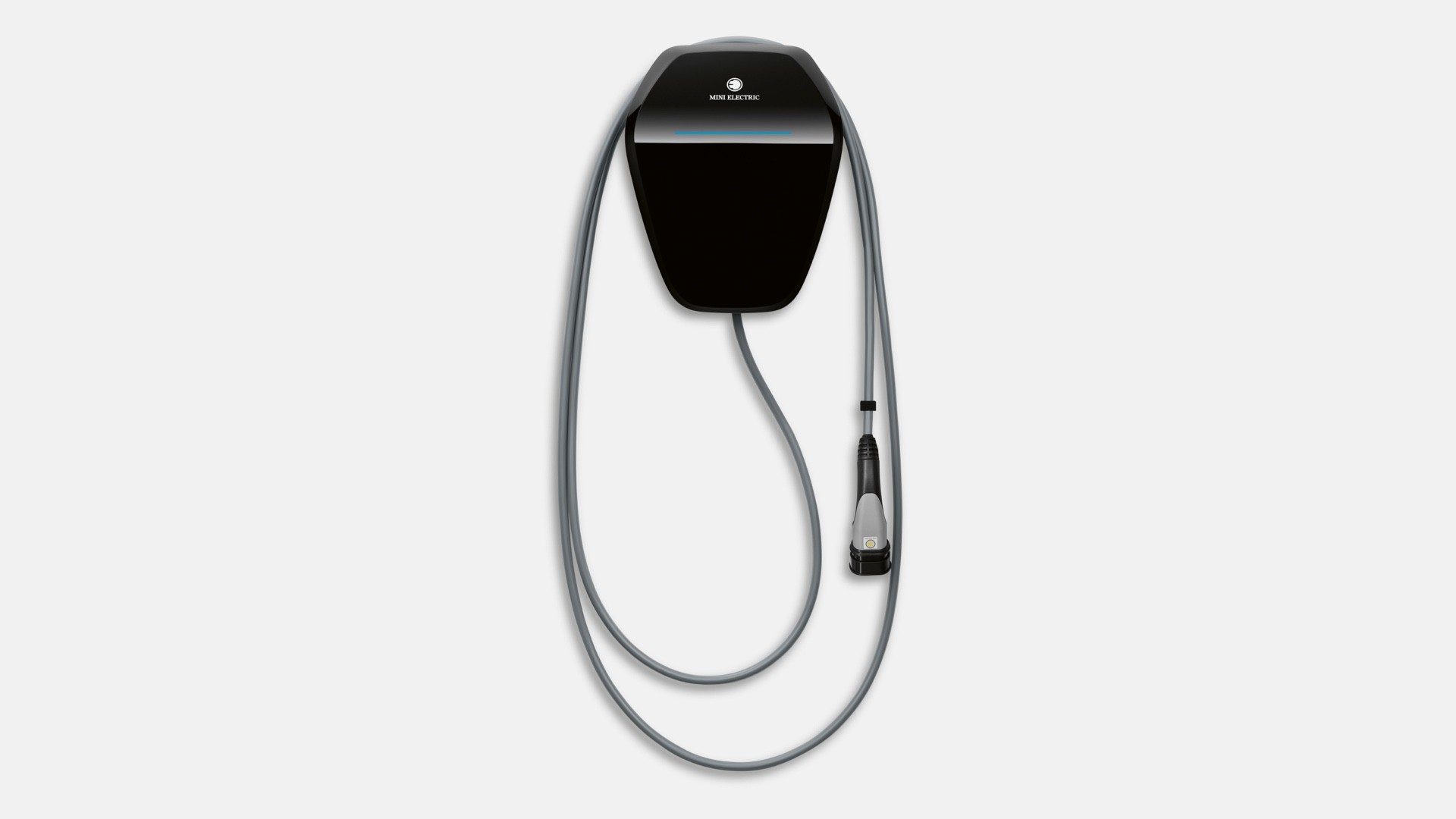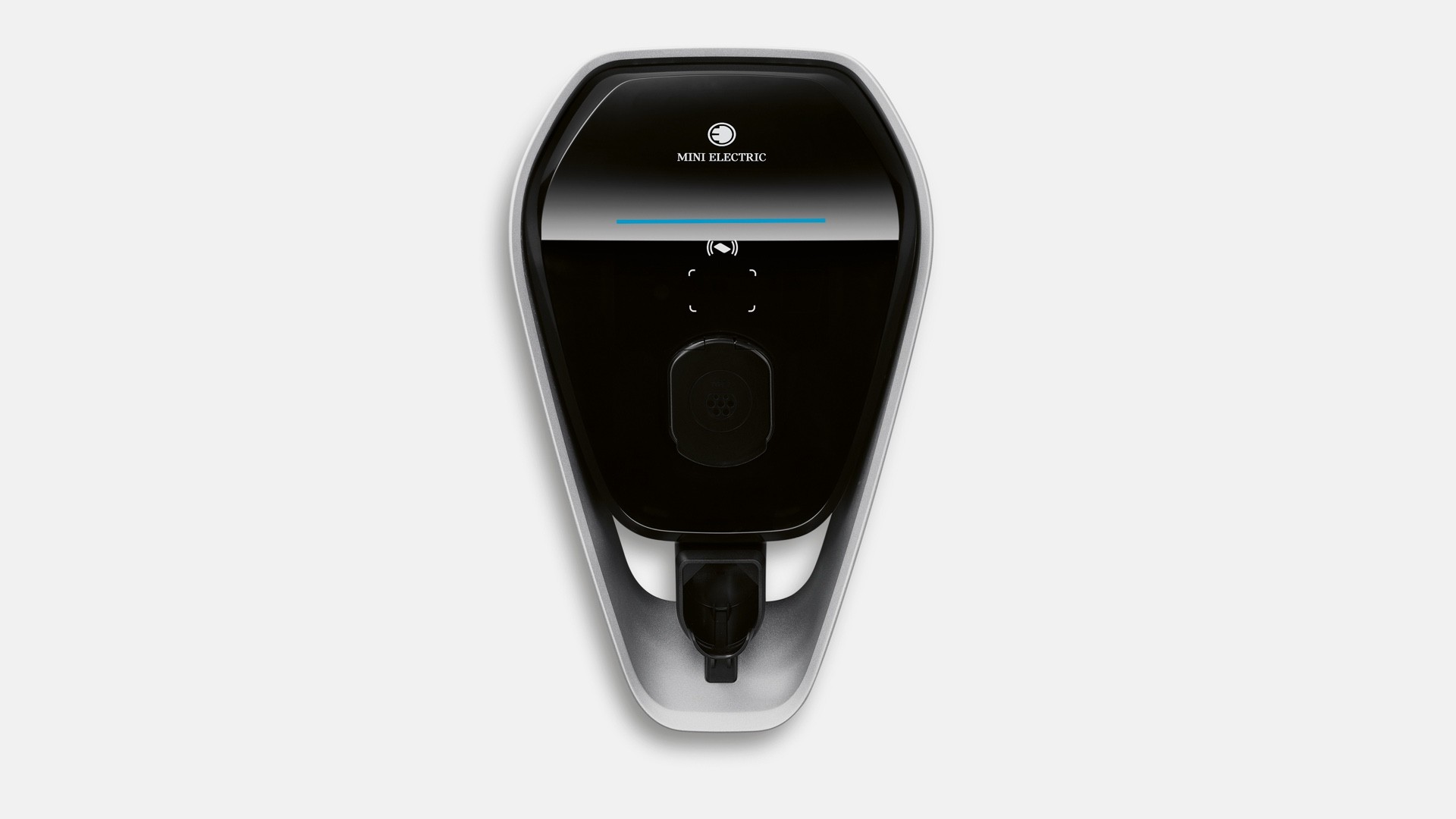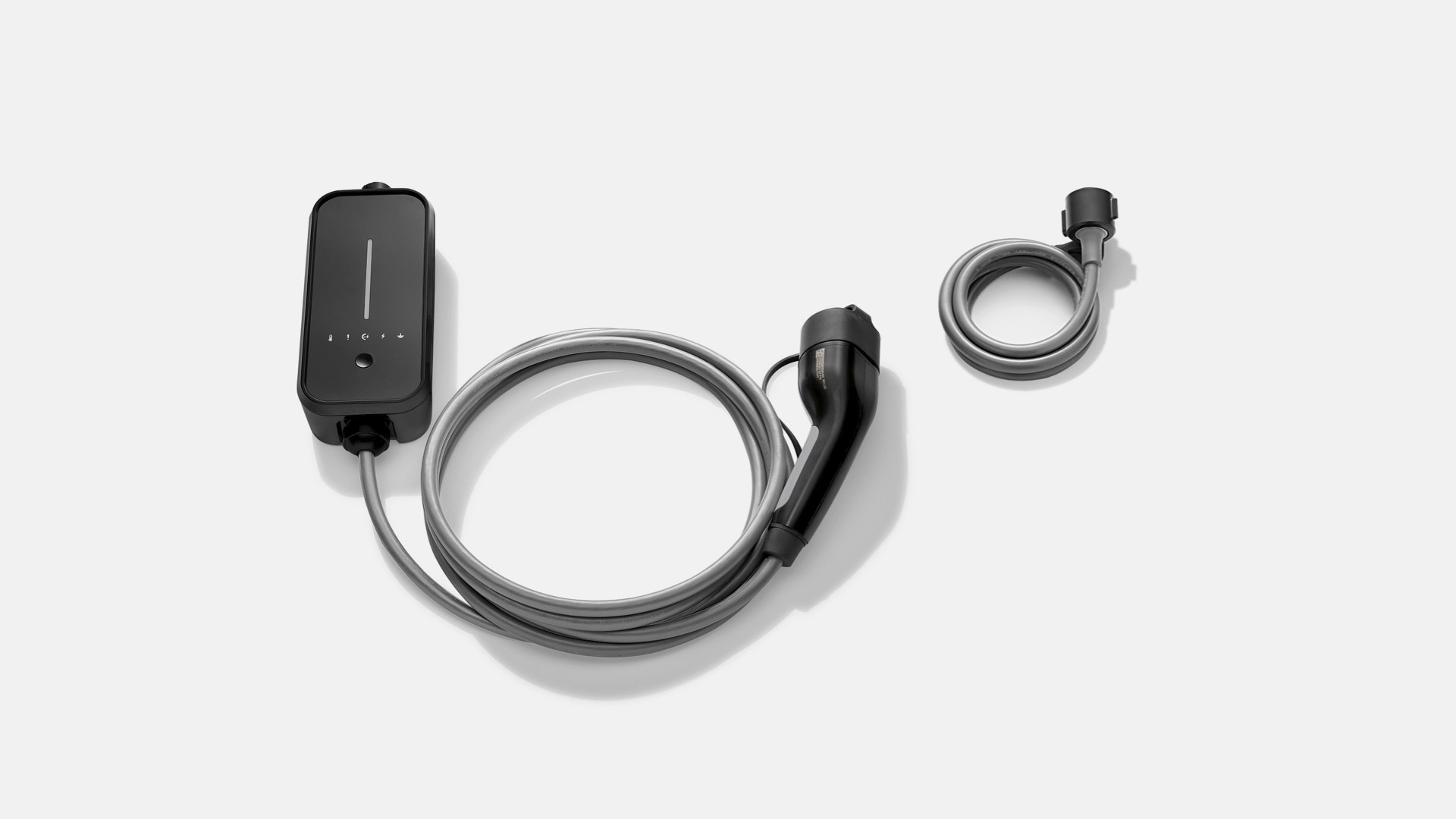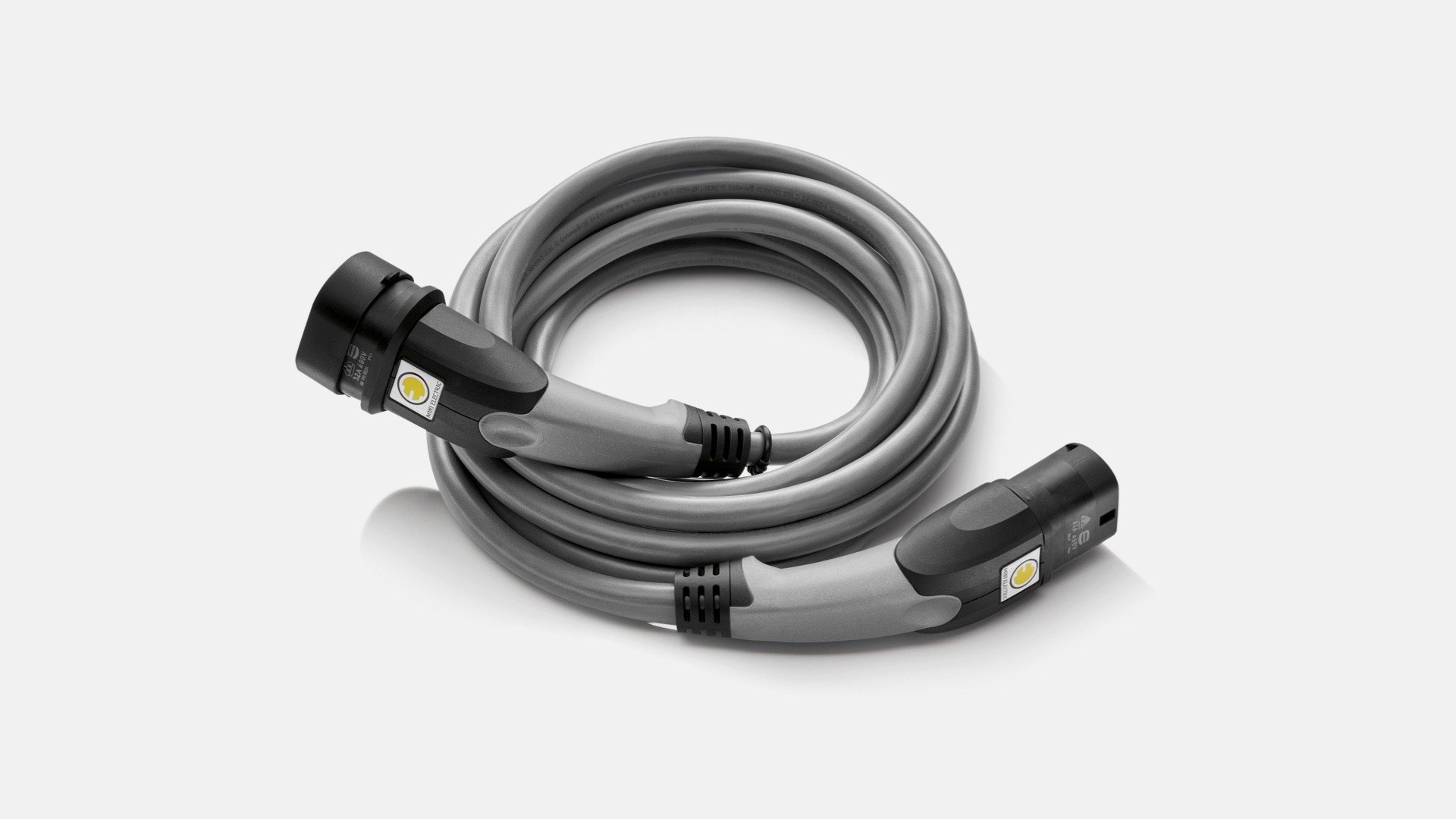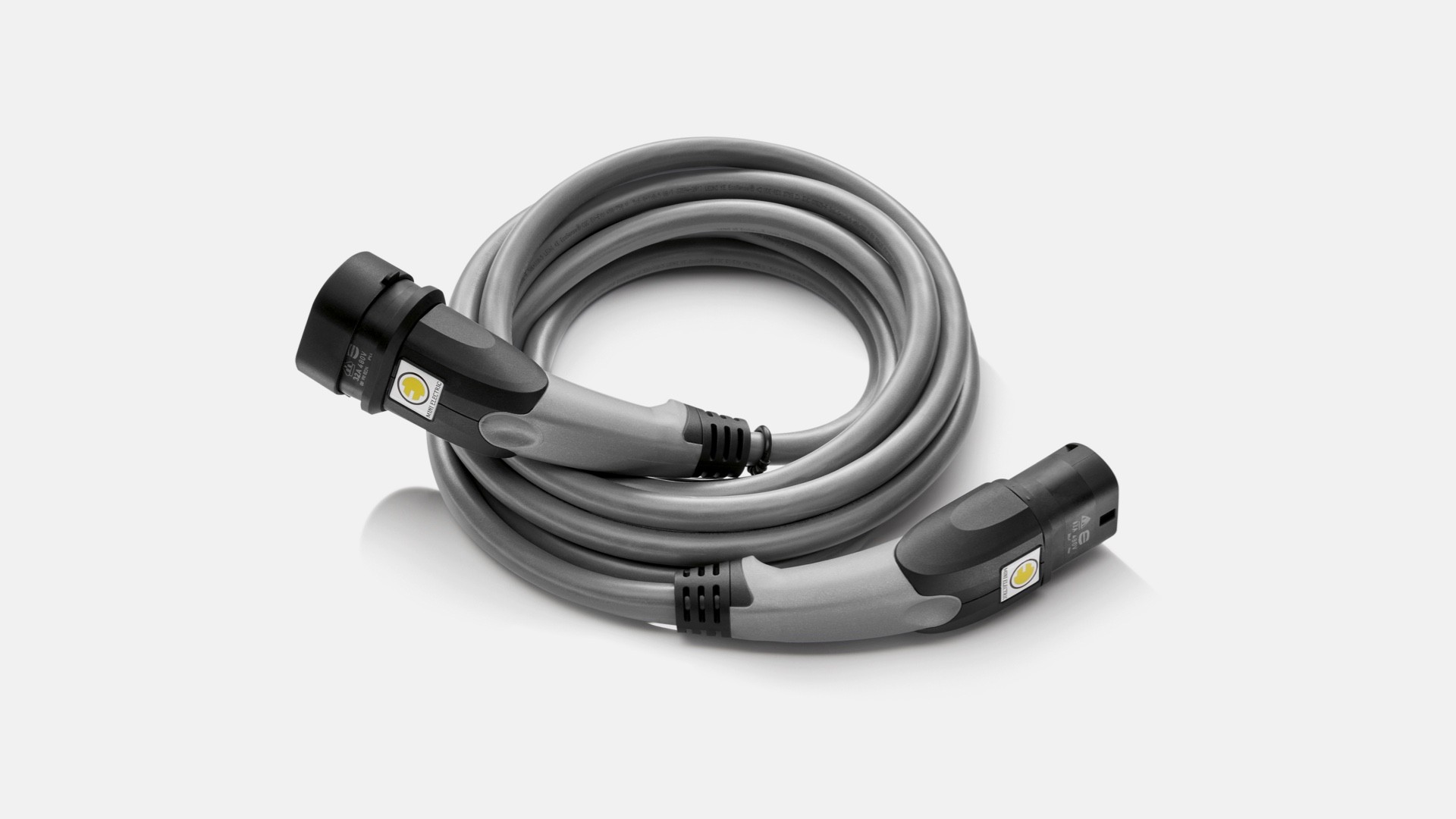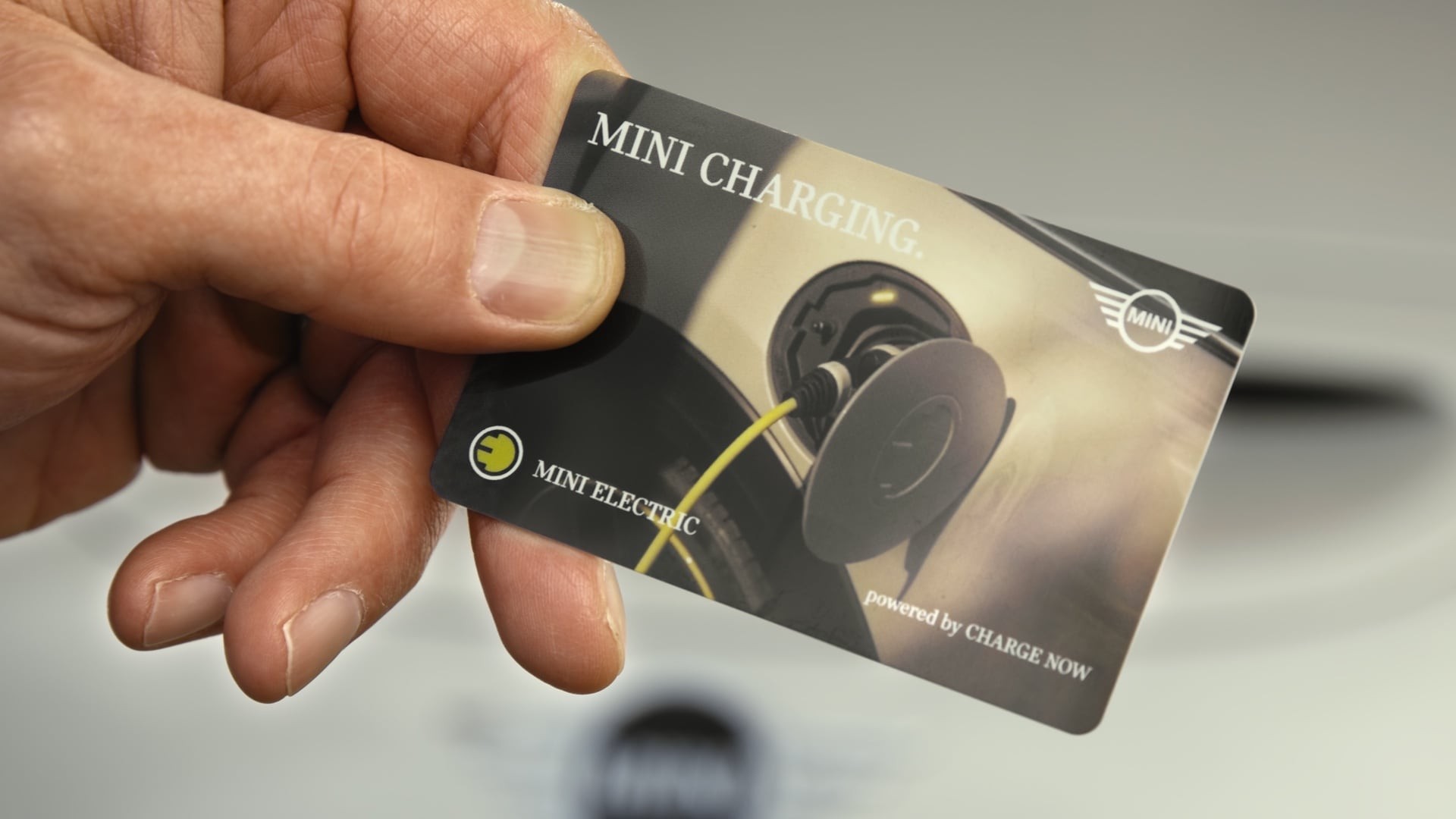Our tool for managing your permission to our use of cookies is temporarily offline. Therefore some functionality is missing.
ELECTROMOBILITY.

MINI CHARGING.

CHARGING AT HOME.
HOUSEHOLD PLUG.
You don’t actually need any complex installation or unit to charge at home.
Simply use the standard charging cable and adapter included with your all-electric MINI to plug into any conventional household 230-volt power socket (SchuKo).
2.5 hours of slow charging will be enough for your next commute of up to 50 km.
A whole night using the household plug will be enough on average to give you several days of city driving.


FASTER CHARGING WITH A WALLBOX.
A wallbox offers you a convenient, faster alternative to the standard mains supply, if you want to charge your EV regularly at home.
More power: a dedicated, 3-phase 11 kW wallbox connection will generally give you up to 3-times faster charging time. So your All-electric MINI can be fully charged within around 3.5 hours.
Safety first: a wallbox is specifically designed with overheating protection and a fault circuit breaker to allow for a constant high load.
Convenience: there is nowhere more convenient to charge your car than those places you spend most time during the day or overnight.
To install a wallbox, you will need the expert assistance of an approved electrician. If you are interested in installing a MINI Wallbox, we would be happy to help you locate such a specialist in your area. MINI now offers highly attractive options which give you the chance to finance a wallbox with your All-Electric MINI at competitive rates.
You can find more information about the wallboxes we offer right below.
THE COST REMAINS THE SAME.

PUBLIC CHARGING.

MAKE THE MOST OF YOUR PARKING TIME.
Ever more supermarkets, shopping centres and DIY stores are offering free use of their AC, and DC, charging stations or triple chargers at their parking facilities. Many hotels are also keen to be seen as more environmentally aware and making more effort to accommodate guests with electric vehicles. Multi-storey car parks are also offering electric parking spaces at no extra cost.
Your employer might also consider setting up charging facilities for you and your colleagues if space allows.
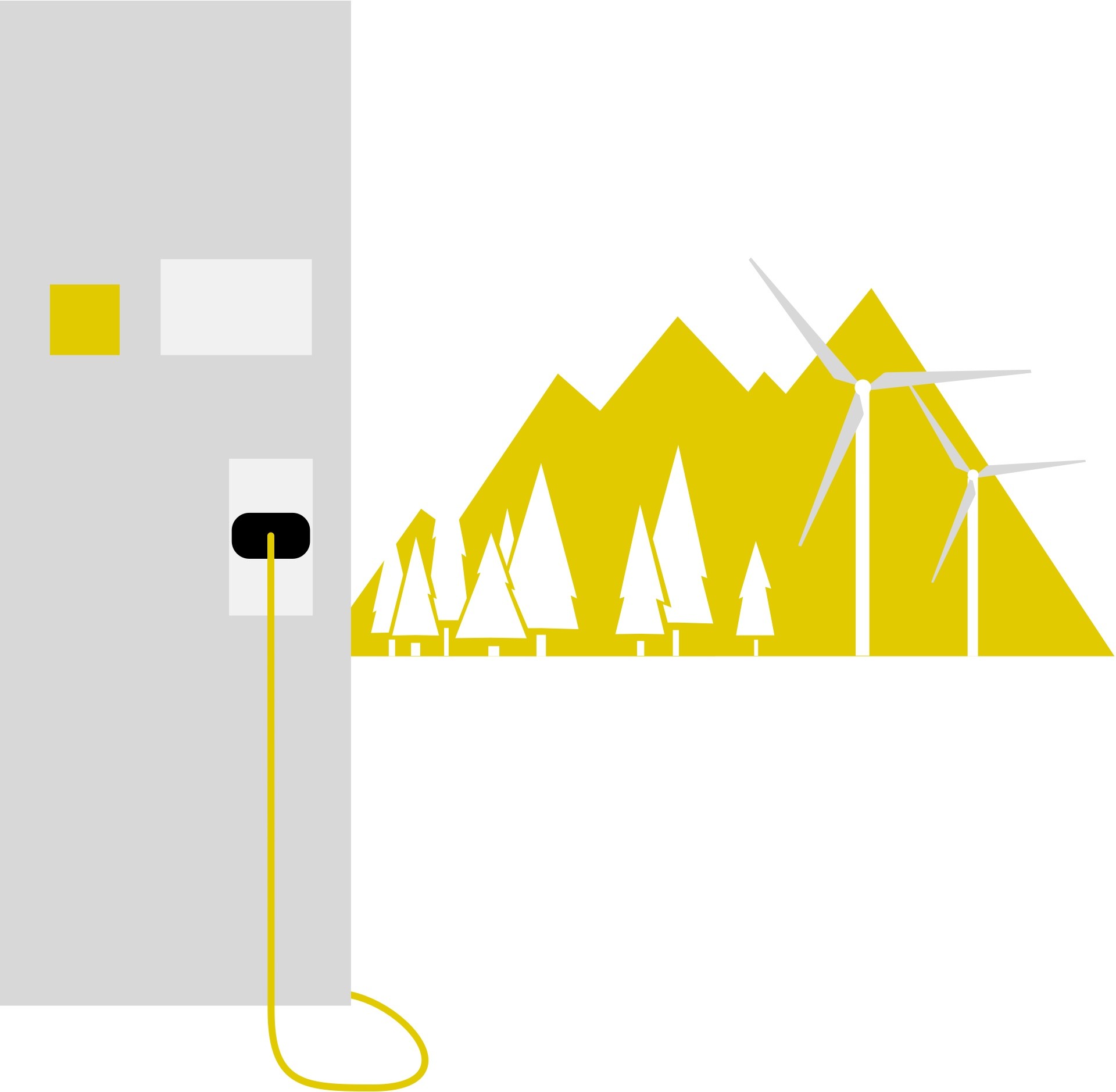

TYPE 2 CHARGERS.
Many AC public charging stations require you to bring your own Type 2 cable. They offer the same power as a wallbox athome and you can charge a MINI 3-DOOR HATCH COOPER SE with the same 11 kW, while the MINI COUNTRYMAN plug-in hybrid uses 3.7 kW. Your MINI includes a Type 2 cable, enabling you to charge wherever you go. Take a look at the other cables available s below.
CCS FAST CHARGERS.
Wherever you’re heading off to, your all-electric MINI couldn’t be better equipped. You can also take advantage of fast charging of up to 50 kW via the Combined Charging System (CCS). This is the standard for rapid charging in Europe.
The upper part of the plug resembles theType 2 plug, while the more powerful conectors below allow for direct current (DC) with a much higher voltage and amperage.AC power has to be transformed by your vehicle, while DC power directly charges your battery.
CCS chargers include the charging cable and no additional hardware is needed. The combination of practically-sized charging capacity and stable charging performance of your MINI ensures you can take many ways to reach your destination – and always have several charging options within reach.
Please note that plug-in hybrids usually don’t support CCS as the smaller battery can’t take as much power.

FAST AND CLEAN.
CHARGING AT WORK.
CONVENIENCE AND FLEXIBILITY.
If charging at home is not viable for a company’s employees or they often need to ‘top up’ during the day, then workplace charging is certainly worth considering. Many employers have now embraced electric mobility and offer a more modern workspace by providing EV charging stations for their employees.
It reveals a responsive and committed employer. EV charging stations on the premises also provide attractive convenience for clients, too. They can simply fill up with charge while attending a meeting or site visit. If your employer hasn’t implemented workplace charging yet, and there is space, why not suggest that workplace charging could be a good move.
There may well be grants, rebates and other incentives available for your company to fund your program and charging infrastructure. One thing to bear in mind, however, is that the demand for EV charging will grow quickly, so it is maybe wise to plan for greater capacity than you currently need today.

WHAT IS FAST CHARGING AND WHEN SHOULD I USE IT?
If you are pressed for time or are on a long trip, you’ll probably want a faster charge to get where you’re going. Type 3 DC fast charging stations have various power levels and can charge some EVs to 80 percent in just 20-30 minutes. In general, higher power levels charge EVs faster. The charging speed may also depend on the type of charging port the electric vehicle has. In fact, not all EVs have a DC fast charging port as a standard feature and most plug-in hybrids can only charge using Type 1 or 2.
Whereas home chargers utilise AC current that’s converted to DC power by the vehicle, a Type 3 charger feeds straight DC energy. It monitors the car’s state of charge and delivers only as much power as the vehicle can handle so as not to overwhelm the charging system and damage the battery. That allows it to charge the car more rapidly. It is also worth bearing in mind that a cold battery charges slower than does a warm one. Once charging has started and the battery is warmed up, the flow of kilowatts increases to the vehicle’s maximum input.

If charging at home is not viable for a company’s employees or they often need to ‘top up’ during the day, then workplace charging is certainly worth considering. Many employers have now embraced electric mobility and offer a more modern workspace by providing EV charging stations for their employees.
It reveals a responsive and committed employer. EV charging stations on the premises also provide attractive convenience for clients, too. They can simply fill up with charge while attending a meeting or site visit. If your employer hasn’t implemented workplace charging yet, and there is space, why not suggest that workplace charging could be a good move.
There may well be grants, rebates and other incentives available for your company to fund your program and charging infrastructure. One thing to bear in mind, however, is that the demand for EV charging will grow quickly, so it is maybe wise to plan for greater capacity than you currently need today.

CHARGE TIME CALCULATOR.
If you drive this distance every dayEASY HOME CHARGING
FAST CHARGING ON THE GO
The range on a single charge is calculated on the basis of a customer-oriented test cycle. The actual range depends on a variety of factors, especially: wheel and tyre sizes selected, personal driving behaviour, route selected, weather conditions, usage of heating/cooling and preconditioning. Depending on external factors, such as the mains voltage or the outside temperature, the real charging times might deviate from the charging times shown in this tool. The charging times have been measured on the basis of an outside temperature of 25°C.


FAQS.
CHARGING AT HOME.
To install your MINI Wallbox correctly, we recommend using our installation service. Simply arrange this service with your MINI Partner, alongside the MINI Wallbox Essential. Our official installation partner (Deutsche Telekom Technischer Service GmbH) will then take on all consultation, installation and start-up tasks.
The benefits for you at a glance:
- Inspection of electrical connection requirements at your property
- Recommendation of suitable installation locations based on your personal parking situation
- Installation, connection and start-up at your chosen installation location (including laying up to 2 m surface-mounted cabling)
- Briefing on the charging process
- 24-month warranty
If any unexpected problems arise after the Wallbox is installed, or if your Wallbox is faulty, you can contact your WallBox supplier for help/information.
MINI CHARGING.
The MINI navigation system provides you with direct access to all charging stations in the MINI Charging network.
You can also search for charging stations: When you set "charging stations" as a special destination in your navigation system, you will be presented with a list of charging stations near you.
The MINI Charging app offers you another option by allowing you to access a list of all available charging stations on your smartphone.
You can use the MINI Charging map or the MINI Charging app to unlock charging stations and start the charging process.
Some charging columns can be operated using the MINI Charging app. The app, which features an integrated QR code scanner, is as easy to use as it is to install. To do so, simply download the app, enter your MINI Charging contract number and your PIN.
- Switch the engine off and apply the handbrake.
- If necessary, set the current before charging.
- Do not use any extension cables.
- Always connect and disconnect the charging cable in this order:
Connecting:
- Connect to the socket.
- Connect to the vehicle.
Disconnecting:
- Disconnect from the vehicle.
- Disconnect from the socket.
LED lights:
- White light: Signal light
- Red light: Charging error
- Orange light: Initialising
- Blue light: Charging active
- Green light: Charging complete
5. Lock the vehicle. The charging process will only start once your vehicle is locked.
Normal charging with alternating current (AC):
This charges your car efficiently, primarily overnight but also during the day. Compared to a domestic power socket, an AC charging station provides more power and can charge the battery in just a few hours. This type of charging station is referred to as an AC charging station, for short.
Quick charging with direct current (DC):
DC quick charging stations are the better option when you need to charge your car fast. They can recharge your vehicle's battery quickly – while you go shopping or have a bite to eat, for example. The charging process lasts between 30 and 40 minutes. This type of charging station is referred to as a DC charging station, for short."
For more information, see minicharging.chargemasterplc.com/
Please note: If you encounter a problem with the charging column, please contact the operator of the charging column. Their contact number can usually be found on the charging column.
MINI Charging tel. no.: 23264000
Email: Info.bmw.mini@mml.mizzi.com.mt
Opening hours: 09:00 to 18:00, Monday to Friday
MINI Customer service tel. no.: 23264000
Email: Info.bmw.mini@mml.mizzi.com.mt
Opening hours: 09:00 to 18:00, Monday to Friday
ENVIRONMENTAL AND SOCIAL STANDARDS IN THE SUPPLIER NETWORK.
The key raw materials of the high-voltage storage are cobalt, lithium, graphite and nickel. The shell of the high-voltage battery is made of aluminum. MINI (BMW Group) is committed to developing a supply chain that is responsible, sustainable and one that meets our own high ethical and human rights standards. Each nominated supplier must provide information on the implementation of environmental, social and governance standards including respect for human rights and the prohibition of forced labour. We work closely with key raw material suppliers to ensure that all materials are responsibly sourced both to protect and enhance the environment, and to ensure the safety and well-being of the employees at any point along the supply chain. We also continue to streamline logistics operations to reduce impacts from transporting components to our plants.
Together with BASF, Samsung SDI and Samsung Electronics, we are committed to sustainable cobalt mining. In a joint project in the Democratic Republic of the Congo, we want to understand how the living and working conditions of local people can be improved. In order to prevent or mitigate adverse impacts and not to let the people of the Congo down, we have also commissioned the German Society for International Cooperation (GIZ) GmbH to improve working conditions in artisanal cobalt mining in a pilot project in the DR Congo. We are aware of our responsibility that the raw materials are mined and processed under normal conditions. We are regularly on-site, know the mines and the working methods of our partners and ensure a clean recovery.
In addition to this, to generally limit the need for critical raw materials such as cobalt, the BMW Group pursues the goal of increasing the proportion of recycled cobalt in battery cells.
In the aluminum procurement process, we not only buy for our own needs, but also make this material available to our suppliers, reliably and at calculable prices. This creates greater planning security on both sides. In order to be able to meet our long-term demands for sustainably produced aluminum in the future, the BMW Group became the first automobile manufacturer to join the Aluminum Stewardship Initiative – actively demanding ecological and social sustainability for certified aluminum across the entire aluminum value chain – from the mine to the recycling process. We also strive to source more recycled aluminium in our manufacturing processes.
The use of secondary materials has a positive effect, especially on the following aspects of sustainability: biodiversity, CO2 emissions (especially in raw materials with energy-intensive production such as aluminum, steel and copper) and the reduction of waste. The average share of secondary aluminum in our vehicles is 20%. For aluminum casting alloys, it is 40%. We work with the Aluminum Stewardship Initiative on the certification of our aluminum partners in accordance with the outlined sustainability standard. For more information please visit aluminium-stewardship.org
Gaining maximum visibility of our supply chain helps us identify issues on the ground and deal with them effectively, often in partnership with our suppliers and other stakeholders. The increase of transparency and resource efficiency in our supply chains is based on compliance with environmental and social standards as defined in the BMW Group sustainability standard for the supplier network. Each supplier must consider the sustainability requirements of the BMW Group in its offer. Furthermore, we are guided by international standards such as the guidelines of the UN Global Compact Initiative (Davos, 01/99) and the "Declaration on Fundamental Principles and Rights at Work" (Geneva, 06/98), the International Labor Organization (ILO) and their due diligence process with the Requirements of the "UN Guiding Principles on Business and Human Rights.“


ELECTRIFICATION OF THE DRIVE.

HOW TO GO FURTHER.

SUBSIDIES AND SAVINGS.
ATTRACTIVE INCENTIVES.

